better than any book on children development :)
12 Child Development Tricks That Parents Will Be Thankful For
Your baby’s vision is blurred in the first months of life, so try to make eye contact with them as much as possible. This way, they will get familiar with the faces around them. Then, later on, incorporate different activities like peek-a-boo or hide-and-seek, which are great tools for early learning. There are also a few more tricks specifically for each stage of development.
Bright Side cares about you and wants to make your experience as a parent easier. That’s why we put together a list of useful developmental tips, according to each age range.
0-3 months
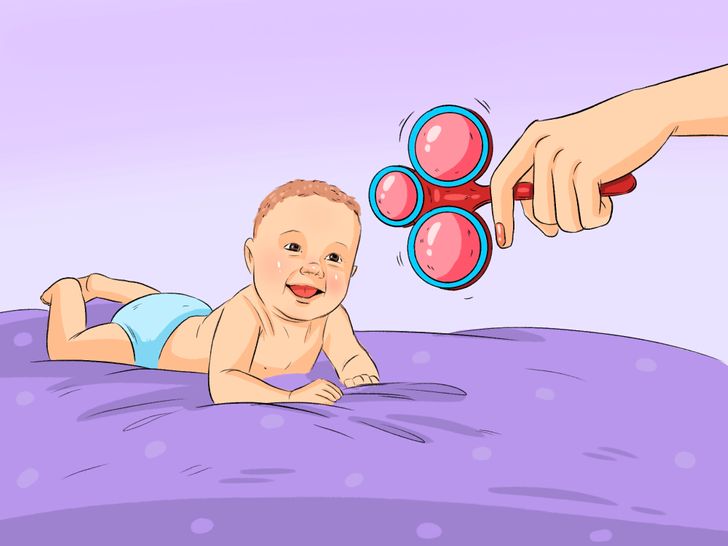
What to do: Place your baby on their tummy and shake a bell or a rattle in front of them. Lift it just a little bit, not too much, and observe whether or not they lift their head and shoulders. If not, encourage them to do it. Whenever they are lying on their back, show them something on the left, then on the right — not too far away — so they can turn their head briefly, with caution.
How it helps: It is beneficial for the baby to have a session between one and 5 minutes of tummy time per day. It builds their head, neck, and upper body strength. These muscles are important so they can eventually lift their head and crawl. Always watch them during tummy time and put them to sleep on their back only.
3-6 months
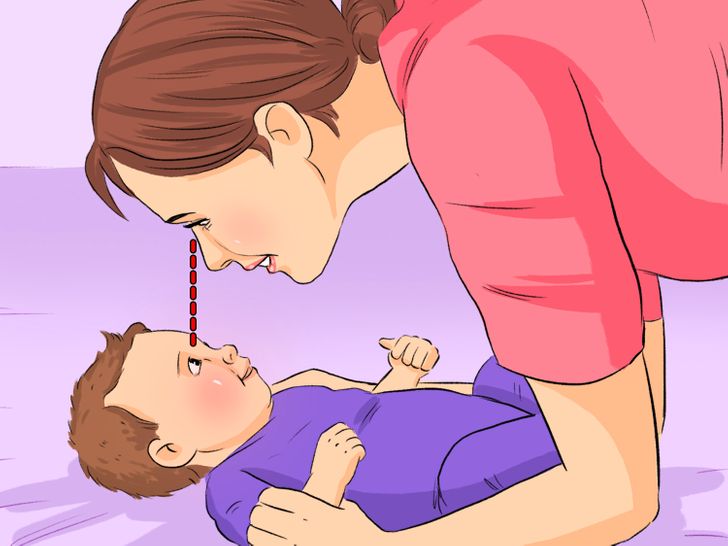
What to do: Hold your baby close and face them toward you, so they can look into your eyes. Make direct eye contact with them and start talking. Their vision is still blurry at this point, so they will try to make sense of your face. They will also probably try to imitate the sounds you make. When they babble, say the same words again. Associate those words with facial expressions and look at them the entire time.
How it helps: You are helping them learn about language and communication and you are also showing them the link between words and feelings.
6-9 months
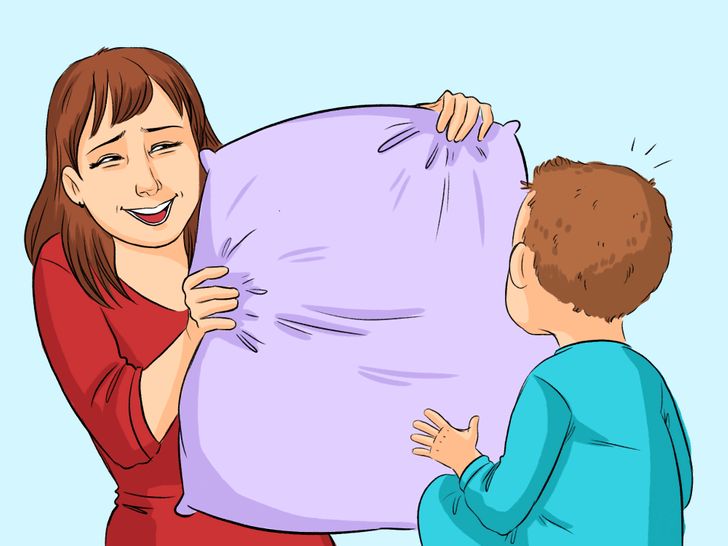
What to do: You can incorporate different activities at this stage. For example, play “peek-a-boo” with your child. You can hide your face behind your palms, an article of clothing, or you can hide behind some pillows or an armchair, for example. After you pop out, in the beginning, they will be surprised that you reappear because they don’t quite understand that you’re actually there the whole time. They only suspect that they will see you again. Play “peek-a-boo” as often as you can.
How it helps: Babies learn through repetition and learn to deduce. This game is a great way to form their analytical thinking. They also begin to understand a concept called object permanence.
9-12 months
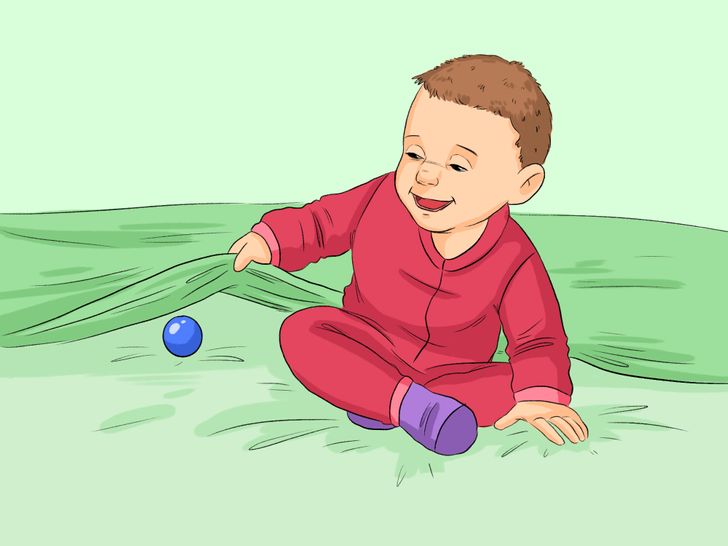
What to do: Play more complex games like “hide and seek” for example. Take a noise-making toy and hide it somewhere, a place where they can reach it. Encourage your baby to look for it just by listening to the sound. Once they do find it, clap or celebrate this in some form.
How it helps: Now they are learning to think and solve problems. This game will exercise their auditory tracking skills and you will also be encouraging your baby’s exploration.
12-15 months
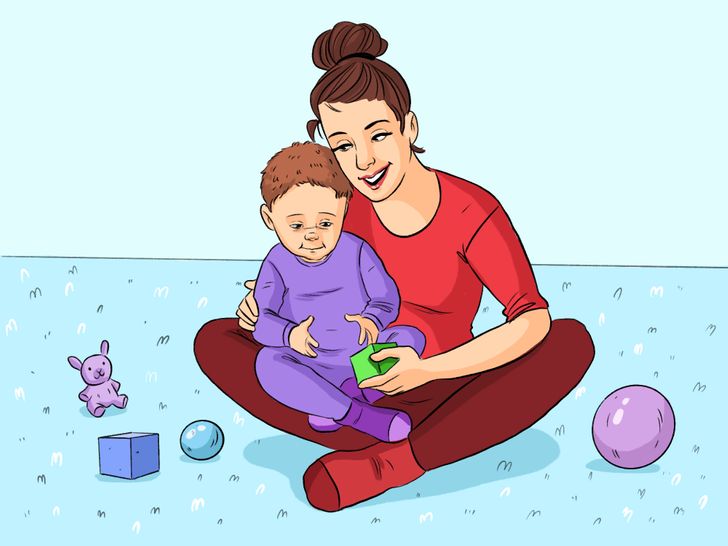
What to do: Name every object that you hold in your hand and show them. Add an adjective for each one of them to describe them. Ask questions about the items. Use open-ended toys like cardboard boxes, containers, or blocks in different shapes and colors. Let your baby play with them.
How it helps: Their verbal skills are just starting to develop. Both indoor and outdoor play will help your toddler understand how things work.
15-18 months
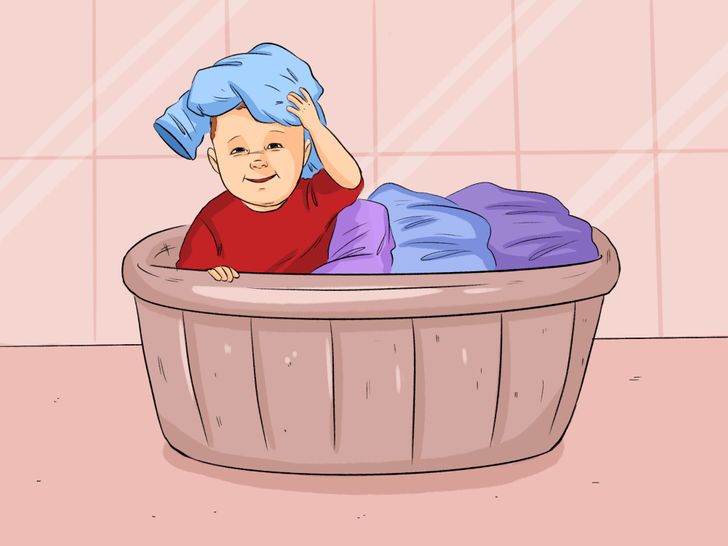
What to do: Take a laundry basket and put different objects inside. Try choosing things that toddlers can pick up easily, without hurting themselves. They will probably want to take the items out and put them back in. They may even try to climb inside the basket themselves. Give them instructions on how to handle the objects.
How it helps: This will help them develop their gross motor and balancing skills. This game will also put their imagination to work.
18 months-2 years
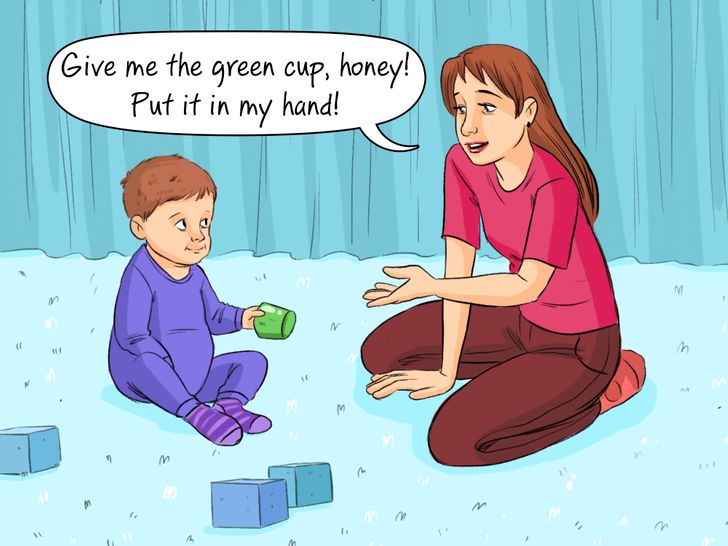
What to do: Ask your toddler to bring you different objects and hand them to you, like a cup or a spoon. Talk to them and form sentences about that specific item. Name different body parts or toys and show them to your toddler as you speak.
How it helps: They will be able to associate words with objects and form complete sentences. Their communication skills will greatly improve.
2-3 years
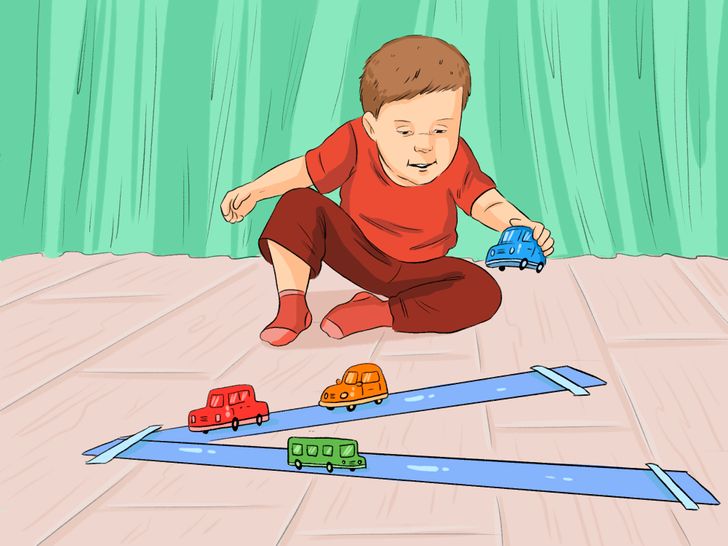
What to do: Play parade with your toddler. It could be an animal parade, car parade, or even a doll parade. Ask them to position the objects according to the size, color, number of legs, or habitat (if that is the case). Before playing, ask them what they think they are supposed to do. While playing, ask them questions about their choices.
How it helps: It will give them the chance to group similar objects that have different attributes, which is an important mathematical skill.
3-5 years
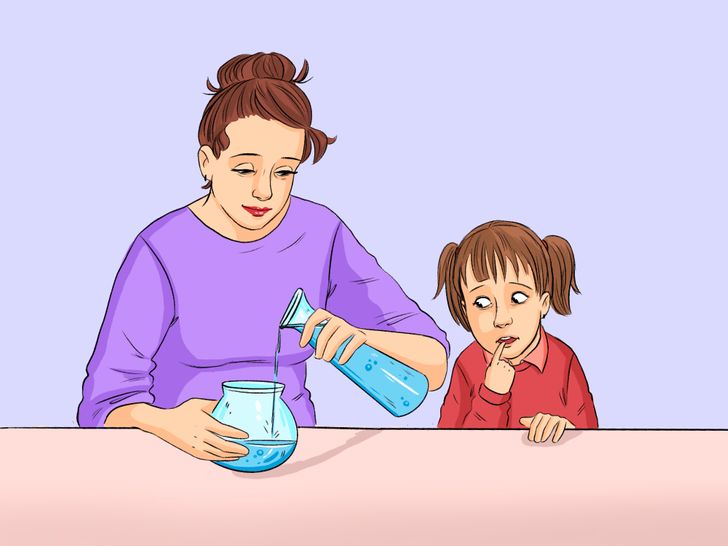
What to do: Pour water from a tall, thin glass vase into another vessel, which should be a shorter, wide glass bowl. Be careful not to spill any water. Ask your child which one they think has more water.
How it helps: Your baby is not yet a logical thinker, so this experiment will help them expand their cognitive development.
6-8 years
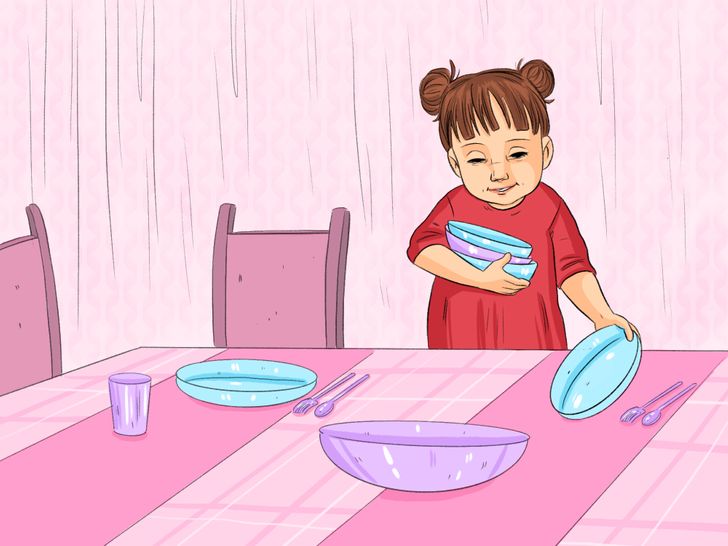
What to do: Ask them to help out with different household chores, like setting the table. Once they have done this, recognize their accomplishment, and say things like, “I am proud of you for doing this.” Praise things that they do, not traits that they cannot change.
How it helps: It will build their self-esteem and self-confidence. Their sense of responsibility develops at this stage and they should be aware that there are consequences to their behavior.
9-11 years
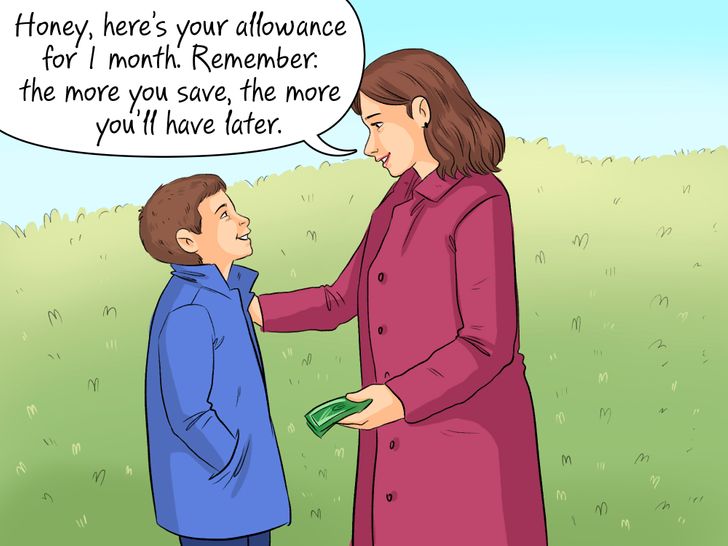
What to do: Involve your child in more complex household chores, like cleaning and cooking next to you. You can start giving them a small allowance and help them manage it. Explain to them the value of money as a means of exchange.
How it helps: They will understand the importance of saving and spending money wisely.
12-14 years
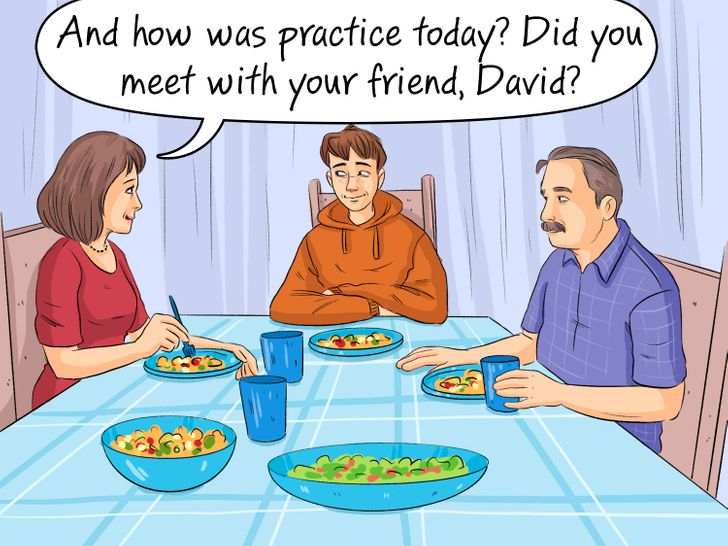
What to do: Right after dinner, allocate 10-15 minutes of conversation for a check-in chat. You can ask about their interests, any sports improvements, their friends, or what they would like to eat the next day for example. You can also make time for a goodnight hug. Each week, choose a day and set a special activity that you only do with your child. It can be as simple as going out for ice cream.
How it helps: They will feel that their thoughts and their wants are being heard and respected. You will also be updated on their activities and their entourage.
Do you have any other fun, but educational, tips that you use with your own child? Share them with us and with the rest of Bright Side readers.
Comments
I also think it's important to add that giving the child money also means that you don't control how they spend it
Related Reads
6 Illustrations Explaining Why You Haven’t Found Your Love Yet
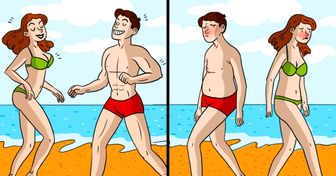
Meg Ryan, 62, Is Praised for Finally Looking Her Age As She Stuns in Her Latest Appearance

A Little Girl Was Called a ’Monster’ Because of Her Birthmark, Until Her Mom Brought Back Her Sweet Smile

19 Comics That Can Make Any Woman Laugh but Never Admit to Certain Behavior

Miley Cyrus Raises Eyebrows as She Wears a Naked Dress Made Only of Safety Pins at the 2024 Grammys

A Homeless Woman Receives a Full Makeover and Impresses the Whole World

“She Needs to Leave Her Face Alone,” Lady Gaga’s Latest Appearance Sparks Controversy

A Girl Born Without Nose, Who Was Called “Voldemort”, Proved Everyone Is Beautiful in Their Own Way

What 14 Celebrities That Appeared on “The Most Beautiful People” List Look Like Now

I Was So Ugly Until I Spent $30K to Get a New Face

«Looks 65,» Selena Gomez Flaunts Her Figure in a Fitted Dress, Sparks Controversy

15 Side-by-Side Photos That Were Taken by Celebrities Themselves and by Professional Photographers
